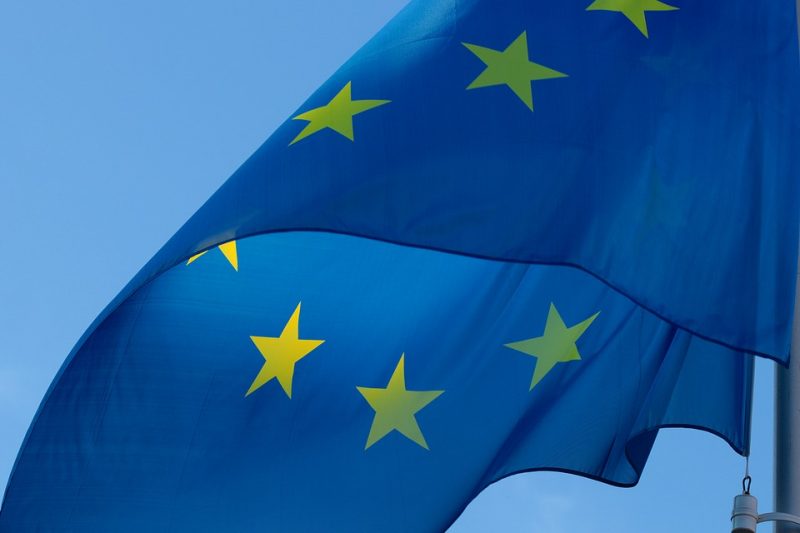
Water scarcity is affecting many regions worldwide, and water reuse can help to address this issue. However, its potential remains largely untapped in the European Union. Possible obstacles to water reuse practices in Europe include (i) an inconsistent national legislation across Member States, (ii) water reuse costs (e.g., upgrade of urban wastewater treatment plants (WTPs) to address more stringent limits on water quality), and (iii) last but not least, a general public distrust related to human health risk.
To overcome these obstacles and speed up a safe water reuse practice, the European Commission (EC) has started a discussion related to a legislative proposal on minimum quality requirements (MQR) for water reuse in agricultural irrigation (and aquifer recharge). The Joint Research Centre (JRC) of the EC received the mandate to finalize a technical report proposing MQR for reuse categories including agricultural irrigation and aquifer recharge as well as covering the related relevant aspects (e.g. water quality, application, monitoring). The final report has been recently published and received some remarks from the European Food Safety Authority (EFSA) and the Scientific Committee on Health, Environment and Emerging Risks (SCHEER) (Rizzo et al., 2018), which were asked by EC a scientific advice to ensure that the proposed EU MQR proposed by JRC appropriately address risks and ensure a high level of health and environmental protection.
In particular, SCHEER is of the opinion that “the MQR proposed provide insufficient protection against environmental risks.” One of the main concerns of SCHEER is related to the matter that the risk associated to the occurrence (in WTP effluents) of some parameters, such as the Water Framework Directive (WFD) priority chemicals and other organic pollutants (namely, the so-called contaminants of emerging concern (CECs), which include pharmaceuticals, personal care products, microplastics etc. (Pal et al., 2014)), has not been sufficiently addressed.
Moreover, according to SCHEER’s scientific advice, the JRC document does not take into account the microbiological risk associated with bacterial regrowth in stored treated wastewater before water reuse for agricultural irrigation, because the only point of compliance recommended by JRC is “the final reclaimed water effluent after adequate treatment.” As matter of fact, wastewater treatment and disinfection processes cannot completely inactivate bacteria under typical operating conditions implemented in WTP, which can regrow after treatment (Li et al., 2013; Fiorentino et al., 2015).
An additional concern for irrigating crops with treated wastewater is related to the possible contribution of WTP effluents to the risk of antibiotic resistance transfer. WTP effluents contain high concentrations of mobile genetic elements (including bacteria) which harbor antibiotic-resistant genes that may promote antibiotic resistance spread in soil and/or plants (Rizzo et al., 2013; Becerra-Castro et al., 2015). Unfortunately, the JRC report did not take into account antibiotic resistance risk, in spite of that fact that it is recognized that “pathogens may survive on crop surfaces and in soils with the potential to be transmitted to humans or animals or to groundwater or surface water.”
To minimize the risks related to the occurrence of pathogens, CECs, and antibiotic resistance spread, thus making water reuse for crops irrigation safer, a tertiary treatment method should be used. The minimum tertiary treatment train should include conventional filtration followed by disinfection process, but when economically feasible/sustainable, more effective treatment trains should be implemented such as filtration, adsorption, and disinfection or advanced oxidation processes (e.g, UV-C radiation coupled to H2O2).
Finally, a suitable monitoring program should include, in addition to the relevant conventional gross parameters (namely, BOD5, COD, TSS etc.), selected CECs and antibiotic resistance indicators, disinfection by-products, and toxicity tests. The selection of the more suitable parameters/indicators should rely on the ongoing relevant efforts at the EU level (see e.g. EU Watchlist, Switzerland Water Protection Act, NORMAN network, COST Action NEREUS ES1403, and EU projects such as ANSWER MSCA ITN).
These findings are partially described in the article entitled Proposed EU minimum quality requirements for water reuse in agricultural irrigation and aquifer recharge: SCHEER scientific advice, recently published in the journal Current Opinion in Environmental Science & Health.
This manuscript summarizes the scientific advice of SCHEER on JRC document on water reuse and it was finalized by Luigi Rizzo from the University of Salerno, Renate Krätke from the Federal Institute for Risk Assessment, Jan Linders from RIVM, Marian Scott from the University of Glasgow, Marco Vighi from the IMDEA Water Institute, and Pim deVoogt from the University of Amsterdam and KWR Watercycle Research Institute.
References:
- Becerra-Castro C, Lopes AR, Vaz-Moreira I, Silva EF, Manaia CM, Nunes OC (2015). Wastewater reuse in irrigation: a microbiological perspective on implications in soil fertility and human and environmental health. Environ Int 2015, 75: 117-135.
- Fiorentino A, Ferro G, Alferez M Castro, Polo-López MI, Fernández-Ibañez P, Rizzo L (2015). Inactivation and regrowth of multidrug resistant bacteria in urban wastewater after disinfection by solar-driven and chlorination processes. J Photochem Photobiol B, 148:43-50.
- Li D, Zeng S, Gu AZ, He M, Shi H. (2013). Inactivation, reactivation and regrowth of indigenous bacteria in reclaimed water after chlorine disinfection of a municipal wastewater treatment plant. J Environ Sci, 25:1319-1325.
- Pal A, He Y, Jekel M, Reinhard M, Gin K Yew-Hoong (2014). Emerging contaminants of public health significance as water quality indicator compounds in the urban water cycle. Environ. Int., 71:46–62.
- Rizzo L., Kraetke R., Linders J., Scott M., Vighi M., de Voogt P. (2018). Proposed EU minimum quality requirements for water reuse in agricultural irrigation and aquifer recharge: SCHEER scientific advice. Current Opinion in Environmental Science & Health 2, 7-11.
- Rizzo L, Manaia C, Merlin C, Schwartz T, Dagot C, Ploy MC, Michael I, Fatta-Kassinos D (2013). Urban wastewater treatment plants as hotspots for antibiotic resistant bacteria and genes spread into the environment: a review. Sci Total Environ, 447:345–360.









